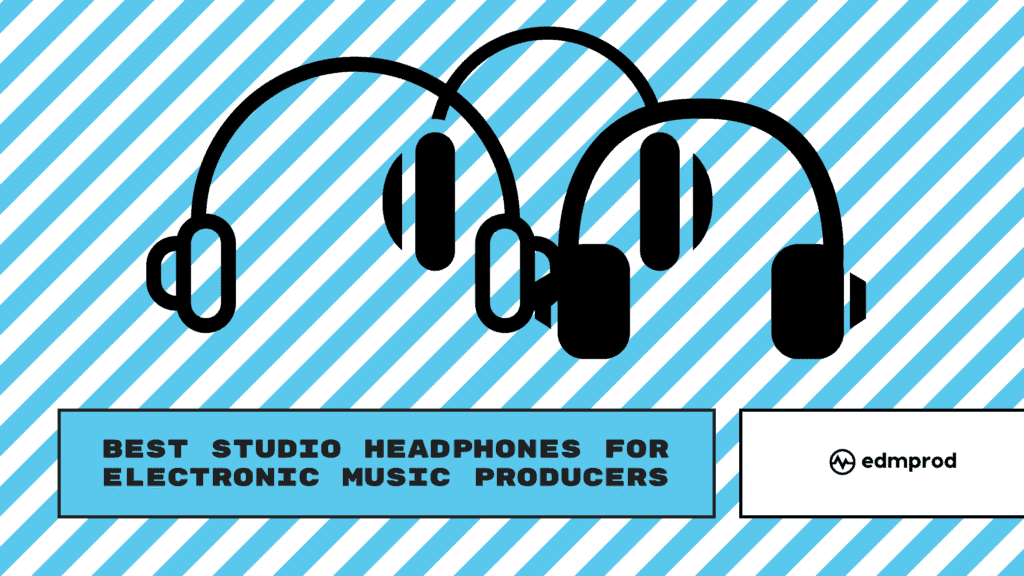Studio headphones are one of the most important tools for electronic music producers.
Especially in the world of portable music production, where music can be made in a café, on the bus, or even in the middle of a shopping center.
Not to mention, headphones are a far less costly alternative to studio monitors. Plus, they require a whole host of other elements to make them work at an optimal level (e.g. audio interface, a subwoofer, acoustic treatment, the right room etc.)
That being said, will regular listening headphones suffice?
Or do you need to invest in a decent pair of headphones? And if so, which are the best ones?
In this guide, we’ll show you the best studio headphones for electronic music producers, from the most affordable to the top-tier options.
We’ll cover:
- whether consumer-grade headphones are good enough for music production
- what factors to consider when purchasing a new pair of headphones
- the different brands and models of headphones you should consider
+ much more. Let’s get straight to it.
Note: this guide contains affiliate links, which we may earn from.
Get the headstart you need in music production with our EDM Starter Kit 🎛️
Get our collection of high-quality presets, samples and PDF guides – suitable for all genres of electronic music 👇
A Perspective To Consider
Before you go nuts diving into the options below, there’s one thing you should know.
If you can’t get the best studio-grade headphones, don’t let that impact your ability to make music.
If you can’t afford new headphones right now but have a consumer-grade pair for general listening, that’s fine to use.
Whatever will help you start making music with the least friction is the best route to take.
And even for the more technical parts of the production process like mixing and mastering, there are tools like reference tracks that can help you still get to a quality result.
Recommended: Home Recording Studio: What You Really Need as a Producer
Features To Look For
It’s good to weigh up all the factors when choosing a pair of headphones. Buying based purely on the brand, or because your mate told you so might not always be the best route to take.
Here’s a roundup of features to consider:
Open-Back or Closed-Back
Most audio engineers recommend open-back studio headphones for a good reason – they offer a more accurate frequency response and avoid resonance.
Why? Because with closed-back headphones, no matter how much the manufacturer tries to avoid it, frequencies will naturally build up and reflect.
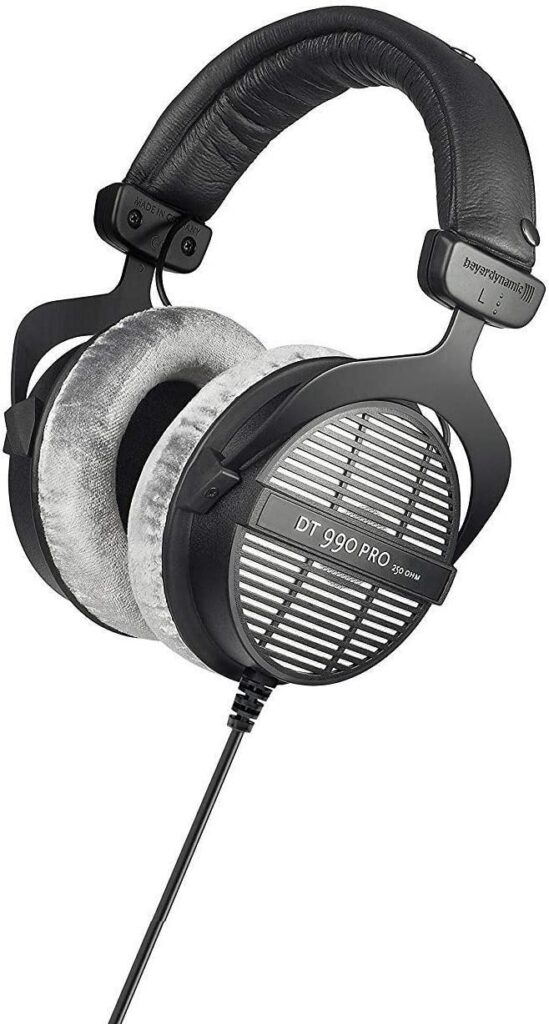
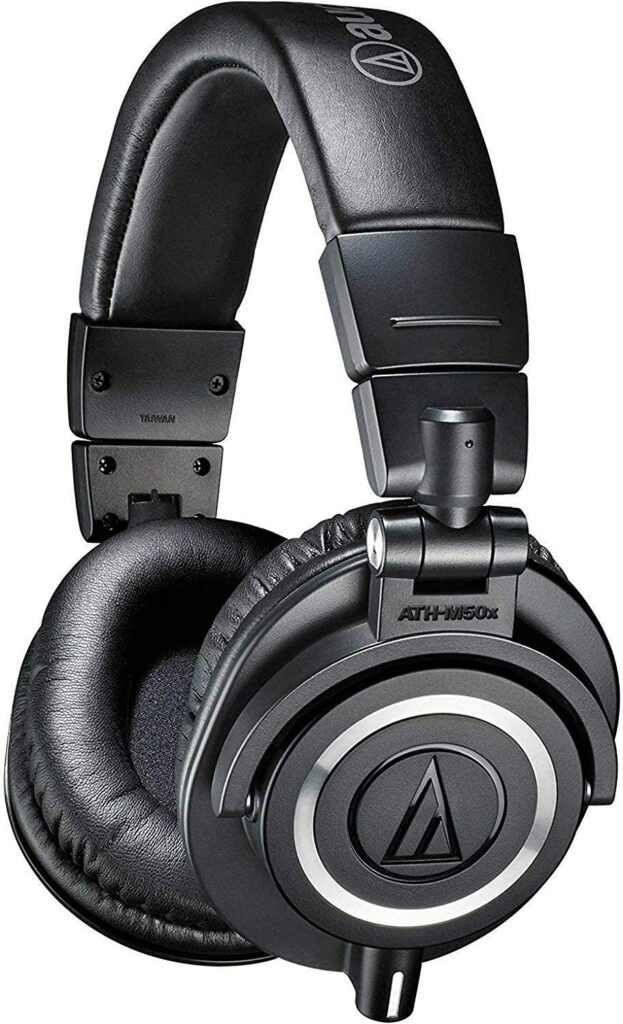
Think of it like playing music on speakers indoors vs. outdoors – you’re always going to get some reflection, even with the best acoustic treatment.
Now is this actually a big issue? It depends.
Most studio headphones do their best to minimize this, and as a result, you’ll likely never know the difference unless you compare both side by side.
And even then, you can still make professional-level music on closed-back headphones.
But if you’ve got the cash to spare, and you’re not worried about noise leakage (open-back headphones naturally let out more noise), then why not go for the best possible option?
Not to mention – open-back headphones are generally more comfortable to wear for longer periods due to the breathability. And speaking of comfort…
Comfort
I put comfort high on the list because it is perhaps a more important factor than sound quality, in my opinion.
Because even with the best audio quality, if you simply can’t make music on them, there is no point in using them.
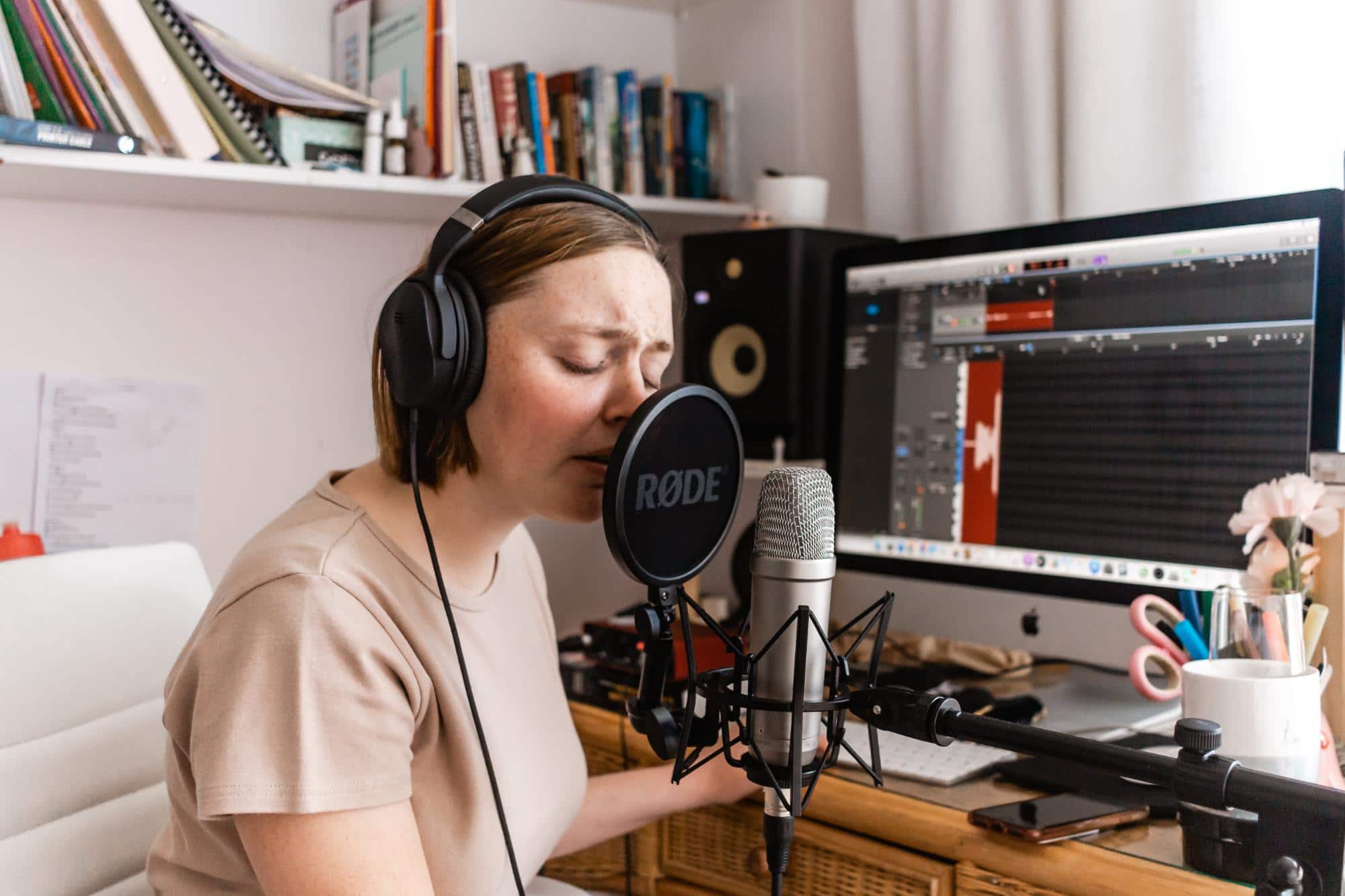
I had a friend who purchased Audeze headphones, which are phenomenal in terms of sound (more on these later). However, he found the comfort factor of them didn’t suit him personally, so he sold them and opted for a cheaper but more comfortable option.
This leads me to the main point about comfort – it’s extremely user-dependant.
You should try wearing any pair of studio headphones that you plan on purchasing before you do, so you can test if they feel good or not.
Whether that’s a $1000+ pair of Audeze headphones or a $150 pair of ATH-M50x’s – it’s all up to your preference.
Frequency Response
Of course, the main factor you probably think of as a producer is audio quality and a flat frequency response.
I’ll let you in on a secret – no two pairs of headphones will have the same frequency response.
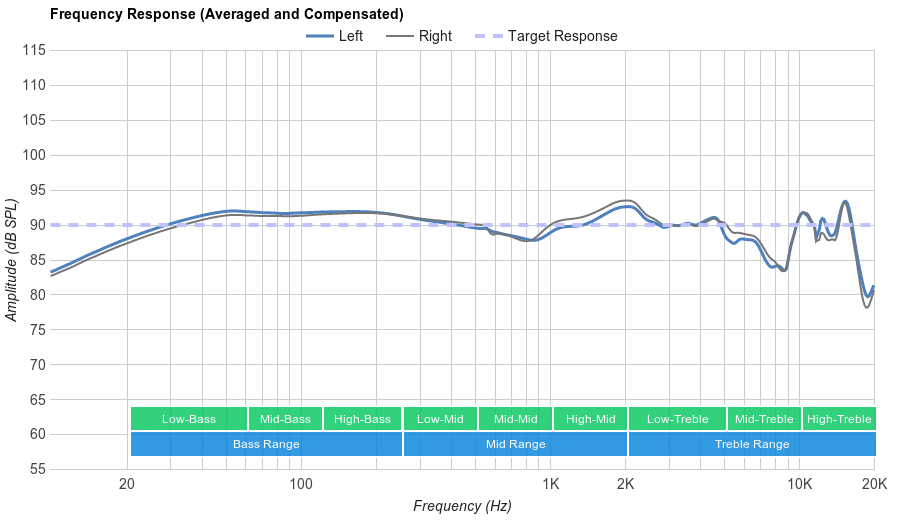
Most companies aim to design their headphones with a uniform frequency curve, but each one misses the mark slightly.
However, more expensive pairs with an open-back design will generally have a more accurate response. The hours spent delicately crafting the headphones for this purpose is generally reflected in the price tag.
If you want to dive into the super-technical side of frequency response, check out Rtings.com.
Recommended: EQ: The Ultimate ‘How To’ Guide
Noise Isolation
If you’re a producer who always makes music on the go, then you’ll be wanting a pair of studio headphones that don’t leak sound, but also that block incoming sound.
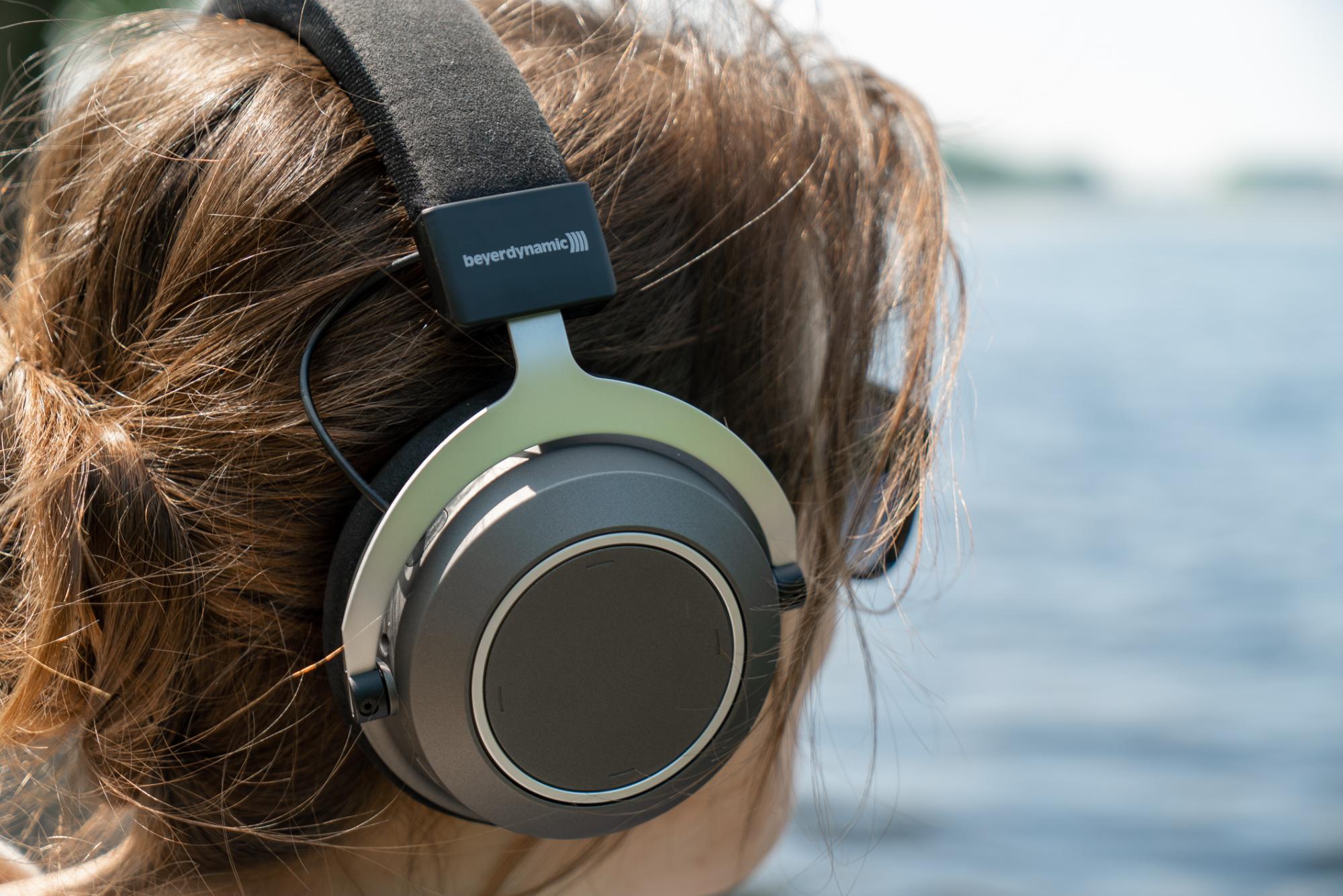
A word of warning – headphones with active noise cancelling are probably not ideal for producing music on.
This is because they record the outside world, and invert the phase of the audio so that you don’t hear what’s going on outside. This can mess with the signal of your incoming audio. Opt for something with a natural design that blocks out sound.
Drivers
The driver in headphones is the part that produces the sound, and the number, size, and quality of them will determine how loud and full they sound.
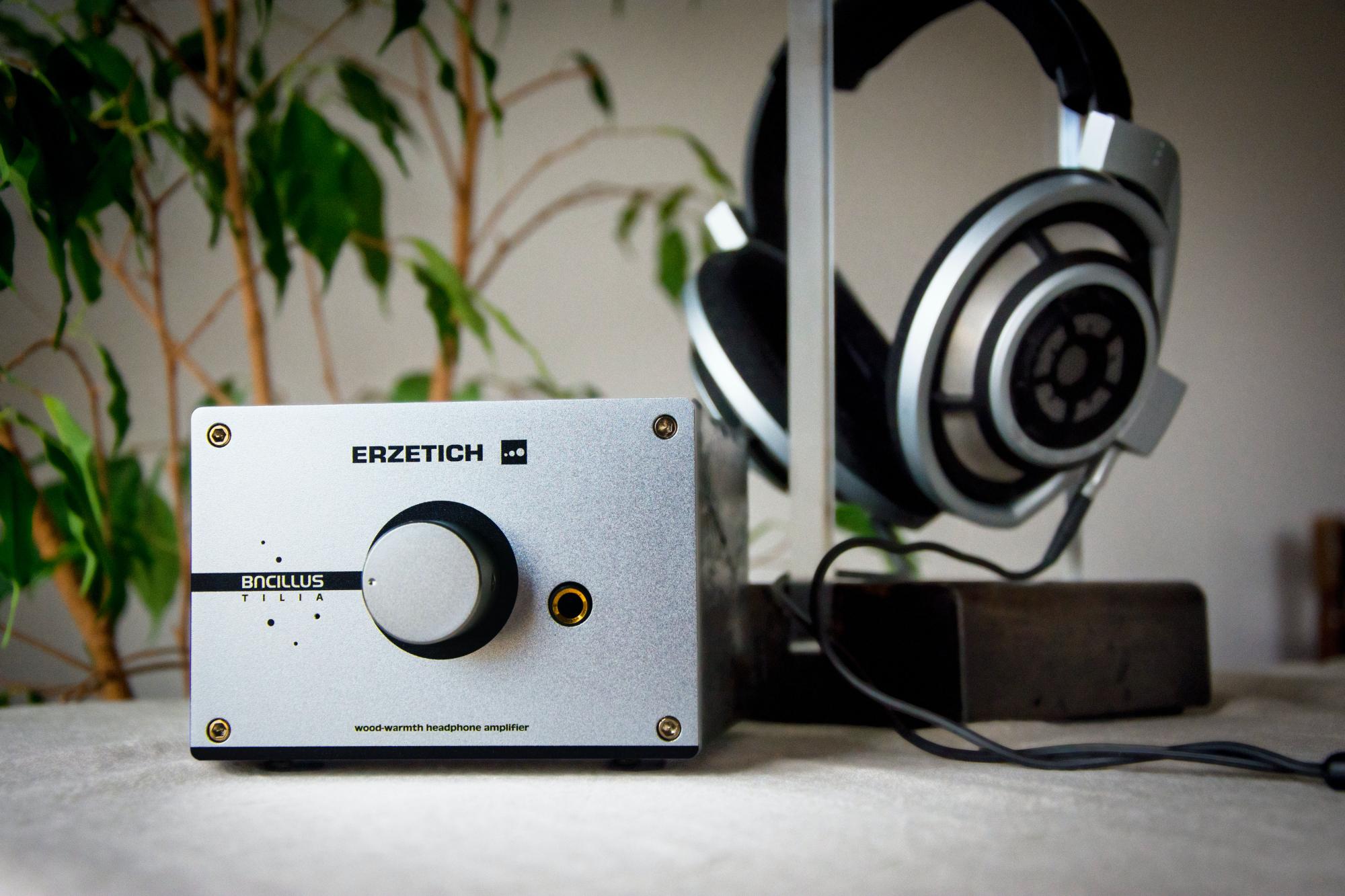
There are a number of different types of drivers (dynamic, planar magnetic, electrosatic etc.) that all have different benefits and drawbacks.
I’m not going to explain in detail each type (here’s a great article if you’re interested), but the most common is dynamic in affordable studio headphones, and higher-end options have planar magnetic drivers.
Generally, larger drives can also deliver a louder, more immersive sound.
The point is to look at the type of drivers your headphones have, and how that translates into sound quality.
Connection
Wireless headphones are now the norm in consumer-grade headphones, but for studio-grade, you should opt for something that has at least the option of a wired connection.
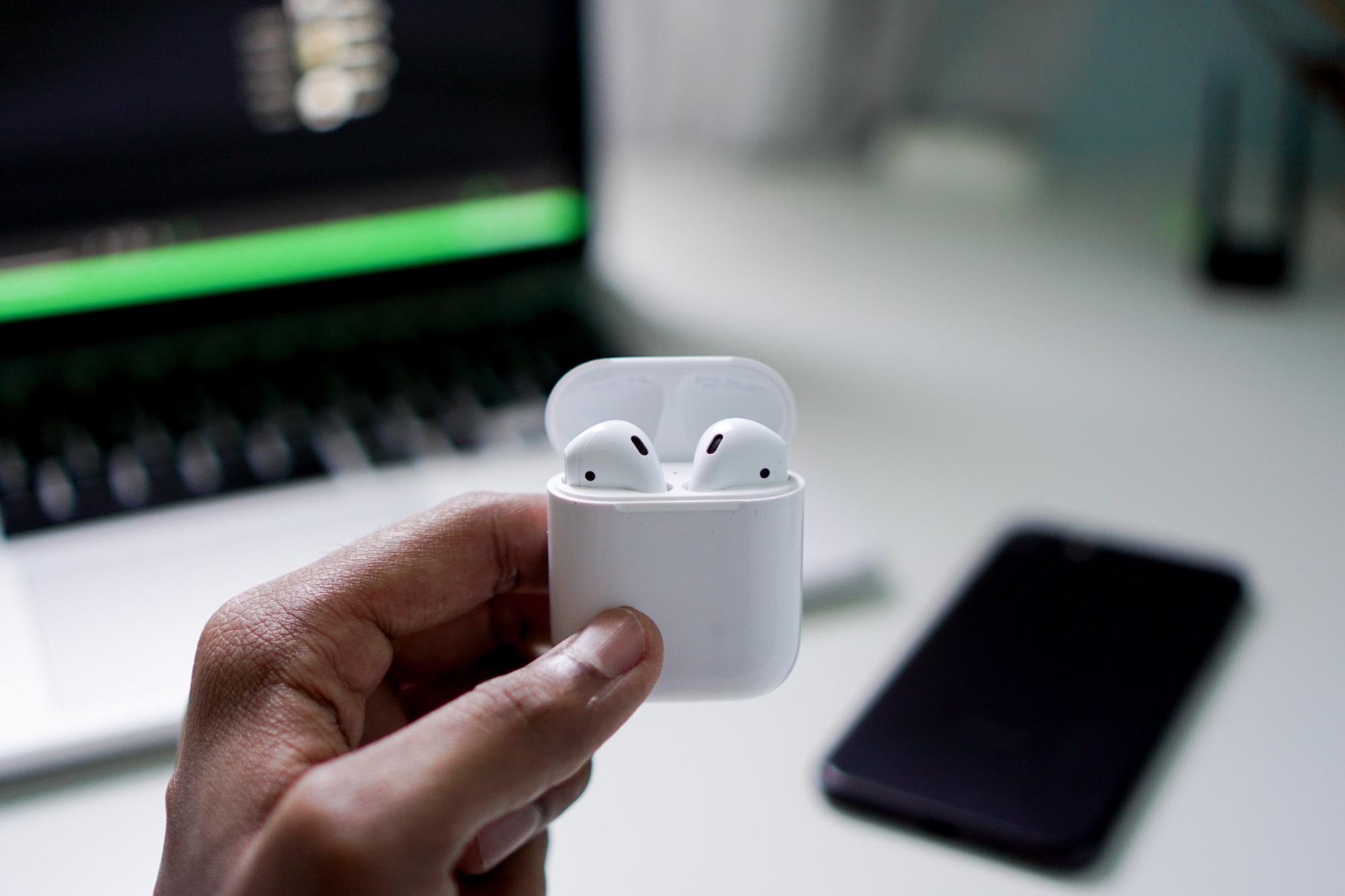
This is because Bluetooth, despite the leaps and bounds it has come in terms of the audio quality, still suffers from bandwidth problems from the audio codec it uses.
This means you don’t hear full quality audio through Bluetooth, even on the latest version, Bluetooth 5.0.
If you also use your studio headphones for listening (which is fine), then you can opt for an option that has both Bluetooth and a 3.5mm jack.
Otherwise, avoid bluetooth-only headphones unless it’s your only option.
The Best Affordable Studio Headphones Under $300
These options are great for beginners, especially if you’re upgrading from standard consumer headphones.
If you’re expecting to spend big, don’t be put off by the lower price tag – many of these pairs are used by world-class producers.
Audio Technica ATH-M50x (or ATH-M50xBT)

The ATH-M50x’s are probably the most classic studio headphones used by electronic music producers. And it’s not all hype – they are solid-sounding and affordable, so it makes sense.
The particular feature that makes them appealing for electronic music is the low-end response. It’s a tad bit on the loud side, but clear enough so that you can really hear what’s going on down there.
Beyond that, they’re comfortable to wear for long periods, easy to wear on the go and are super portable, all for under $200.
The only downsides are the closed-back design and aforementioned bass hype.
Notable features:
- 45mm large-aperture drivers
- Earcups with 90-degree swivel
- Collapsable earcups with detachable cable
- Circumaural (round) earcups
- 15-28000 Hz frequency response
Beyerdynamic DT 770 Pro
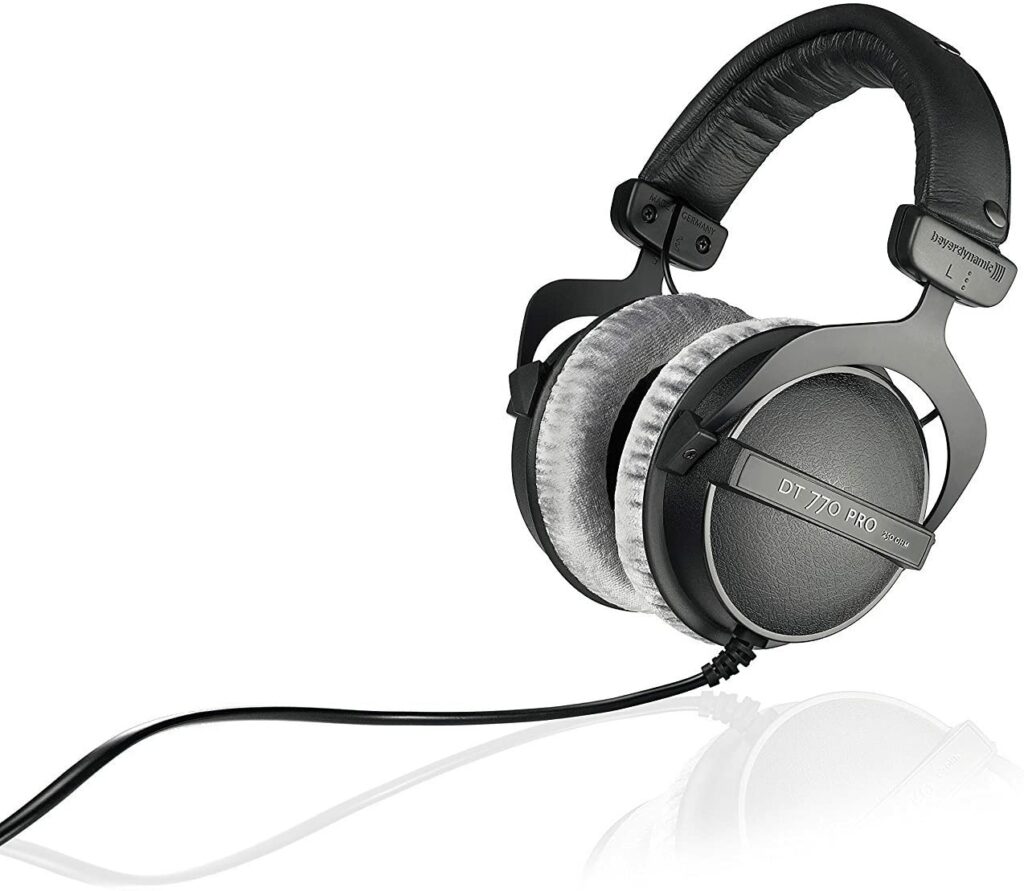
Another staple pair of studio headphones among music producers – the DT 770 Pro’s are sturdy, reliable, and comfortable.
In comparison to the ATH-M50x’s, these have arguably flatter frequency response and sound a lot wider. The bass is less intense but definitely still strong for producing electronic music.
Many people also think they sit more snug on your head, but with more of a strong clamp.
So if you easily get fatigued by wearing headphones, these might be a bit more tiresome to use. That being said, make sure to wear them first, as the wider ear cup might help, and the isolation is also pretty good.
Thanks to German engineering, the strong metal frame also makes them a lot more sturdy than most pairs in this price bracket, which is good to consider for longevity, but a bit more of a pain for portability and weight (also considering the cable is not detachable).
As most under $300 pairs of studio headphones, you’ve got the closed-back design. If you’re wanting similar features in an open-back model, opt for the DT 990 Pro instead.
Notable features:
- “Bass reflex” technology for improved bass response
- Velour earpads that are replaceable
- Includes drawstring bag
- 5-35000Hz frequency response
- 25, 80 or 250ohms impedance (depending on model)
Sennheiser HD 280 Pro
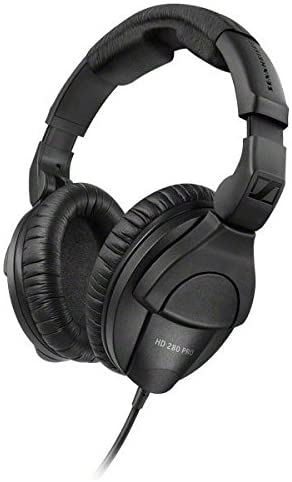
Another entry level pair of studio headphones are the HD 280 Pro’s from Sennheiser.
Although this pair also follows the pattern of closed-back designs, the sound quality is still superb at this price point. You get an extremely well-rounded, flat sound.
The cup is also more elongated, which may be a preference depending on your face shape and needs.
The plastic build is still on the cheaper side, which has the upside of making the pair quite lightweight.
While you might not buy these if you’re trying to look cool, as a production tool they are phenomenal.
Notable features:
- Superb ambient noise attenuation
- Soft, leather earpads
- Earcups fold and rotate for transportation and portability
- 8-25000Hz frequency response
- 64ohms impedance
AIAIAI TMA-2 HD (or Comfort)
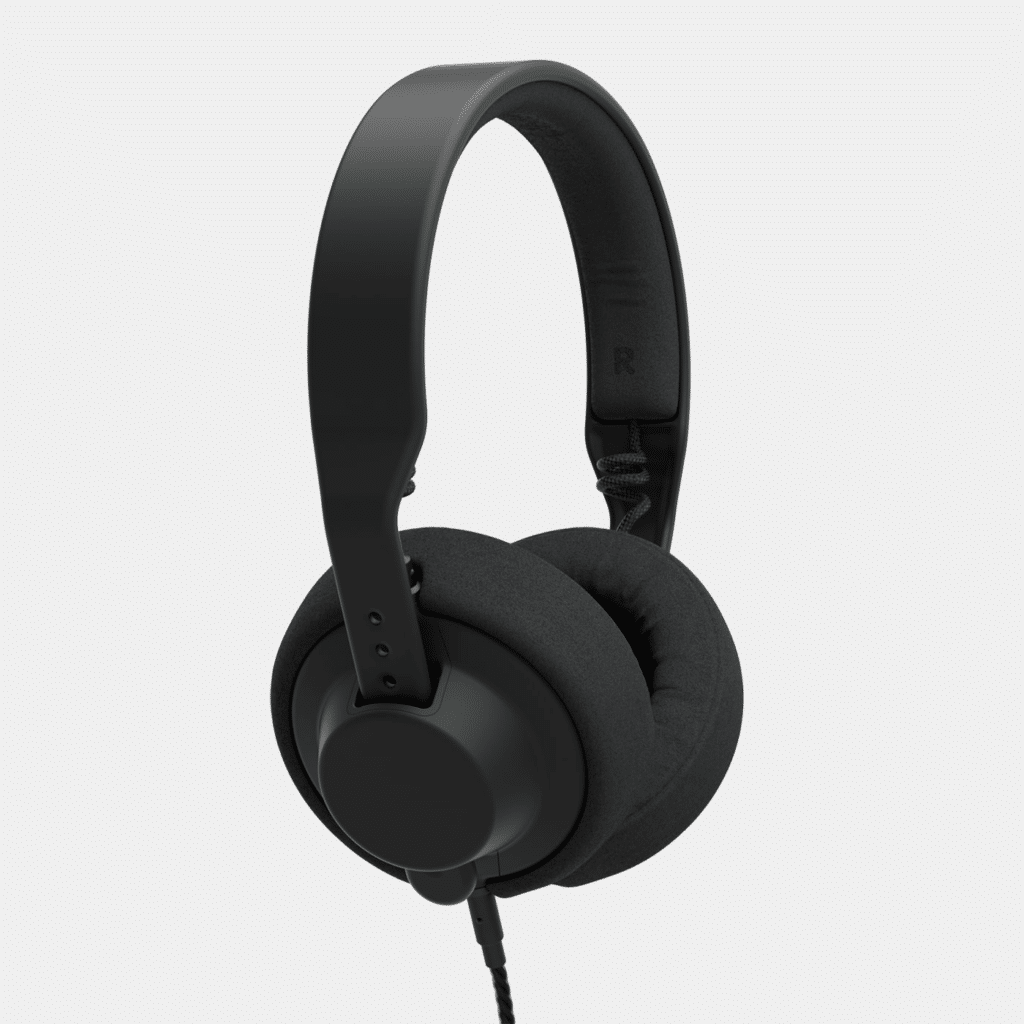
These headphones aren’t quite your standard deal, as they are modular. This means you can swap bands, cups, and even drivers as you please.
The TMA-2 HD configuration is the most ideal for music production, as it delivers quality sound for a studio environment using the S05 speaker unit.
If you’re on a budget, the TMA-2 Comfort is also an ideal choice, just with slightly lower sound quality using their S04 speaker unit.
Notable features:
- High-end triad cable for reduced interference
- Upgradeable modular headphones
- Super soft ear pads
- 20-20000Hz frequency response
- 32ohms impedance
AKG K240 Studio
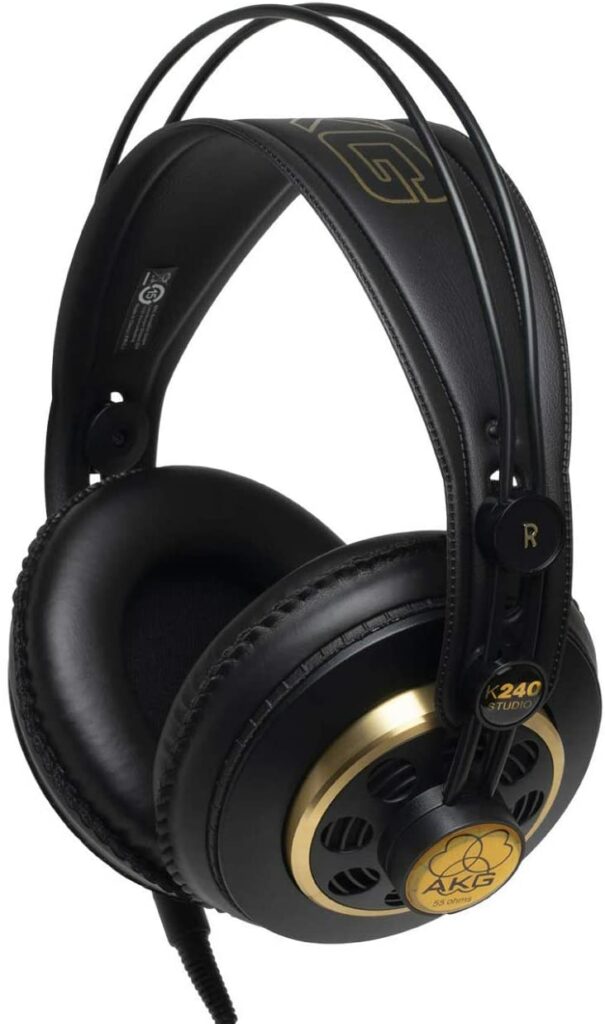
If you’re wanting open-back studio headphones on a budget, then these ones are the best bet.
Okay, they’re technically semi-open-back, but for you, that might be the perfect balance of noise isolation and quality sound. And the cups are pretty good too!
The bass is clear, the highs are detailed and they come in a nice black and gold design.
Notable features:
- Over ear design to reduce fatigue
- Semi-open back technology
- 30mm drivers
- 15-25000Hz frequency response
- 55ohms impedance
Samson SR850
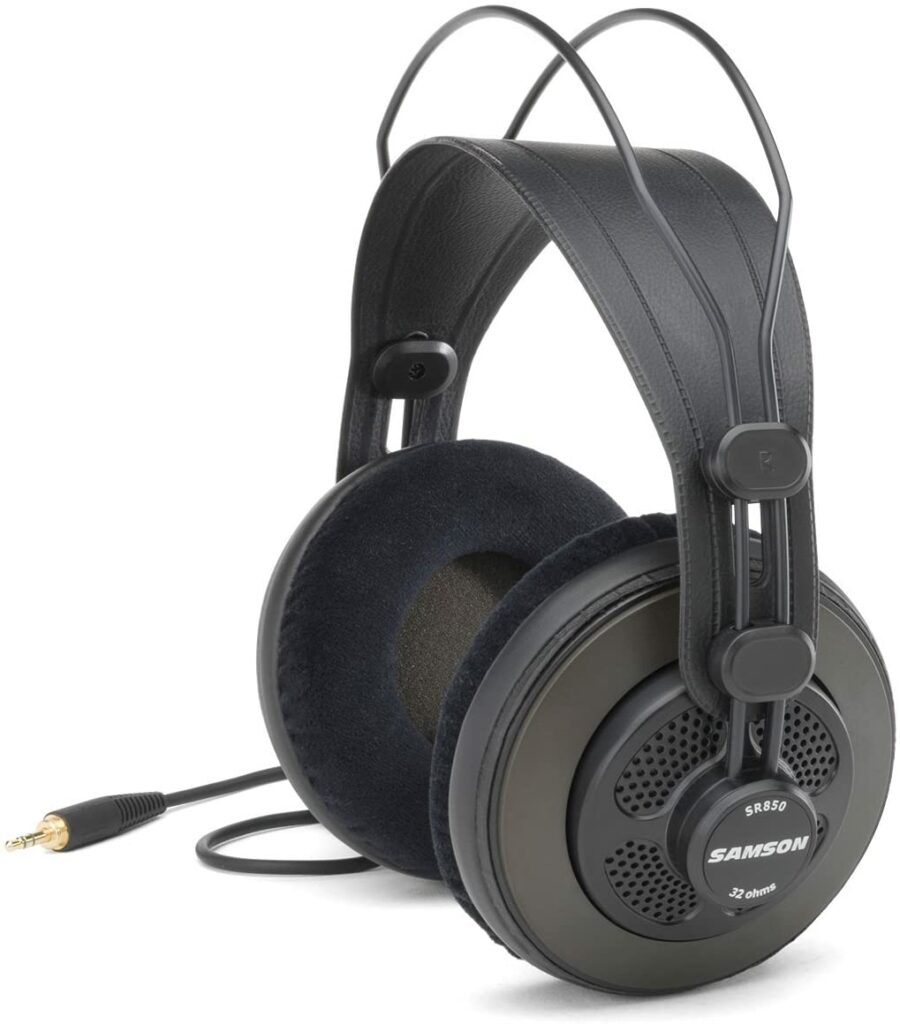
One of the other solid pairs of open-back studio headphones for under $100.
Their quality is pretty good for such a budget headphones, and although they’re not the sexiest or most comfortable headphone, they definitely get the job done.
The AKG K240’s and this pair are quite similar, so if you’re in the market for cheaper open-back headphones, then make sure to compare both on the aforementioned factors.
These ones have a slightly ‘bigger’ sound in comparison to the K240’s, thanks to the larger drivers.
Notable features:
- Large 50mm drivers with rare earth magnets
- 10Hz–30kHz frequency response
- 32ohms impedance
Sony MDR-7506
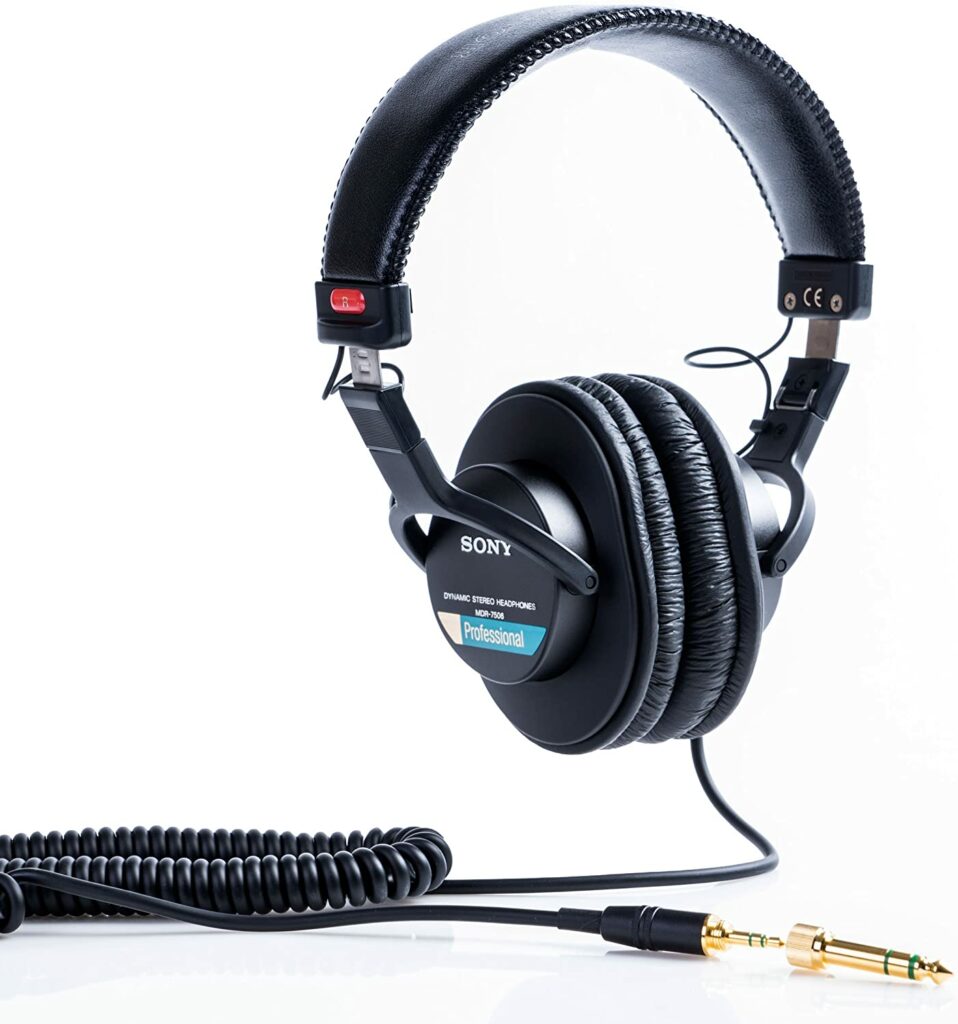
If you’ve ever been into a studio, or a podcast studio, or worked in audio, you will have seen this pair of headphones.
They’re not fancy or new, but they’re phenomenal in terms of sound quality and build.
I love the clear low-mids and highs that come from this headphone. The mids are a little less intense in my experience, but they’re still mostly flat. The main downside is the weaker sub-end.
Like any pair of headphones, over time the cups will peel a bit, but these can be replaced fairly easily.
Notable features:
- Closed-ear design
- 40mm drivers with neodymium magnets
- 10-20kHz frequency response
- 63ohms impedance
The Best Pro-Level Studio Headphones Under $1000
If you’re ready to invest some serious cash into studio headphones, look no further than this list.
Bear in mind that a lot of these are open-back and probably aren’t ideal for listening environments, but they have no compromises in terms of sound quality.
Beyerdynamic DT 990 Pro

The DT 990 Pro’s are the bigger, open-back brother of the 770’s.
These are equal in comfort to their sibling, but with a far better sound response. So if you don’t need to avoid sound leakage, then opt for these ones.
The main difference in sound quality is the stereo image sounds a lot more ‘open’. This makes the general frequency response slightly more accurate too, but it’s not all that different from the 770s. The main thing is a slightly lesser low end, but that’s it.
Like the 770’s, I find myself turning them up quite a lot to get good sound out of them. This is due to the high impedance on the 250ohm model, so make sure you’re using an audio interface or dedicated amplifier.
And yes, the cable is not detachable on this pair either.
Notable features:
- Fully open-back diffuse-field design
- Lightweight diaphragm, ensuring great audio performance
- 5Hz-35kHz frequency response
- 250ohms impedance
- Circumaural ear pads
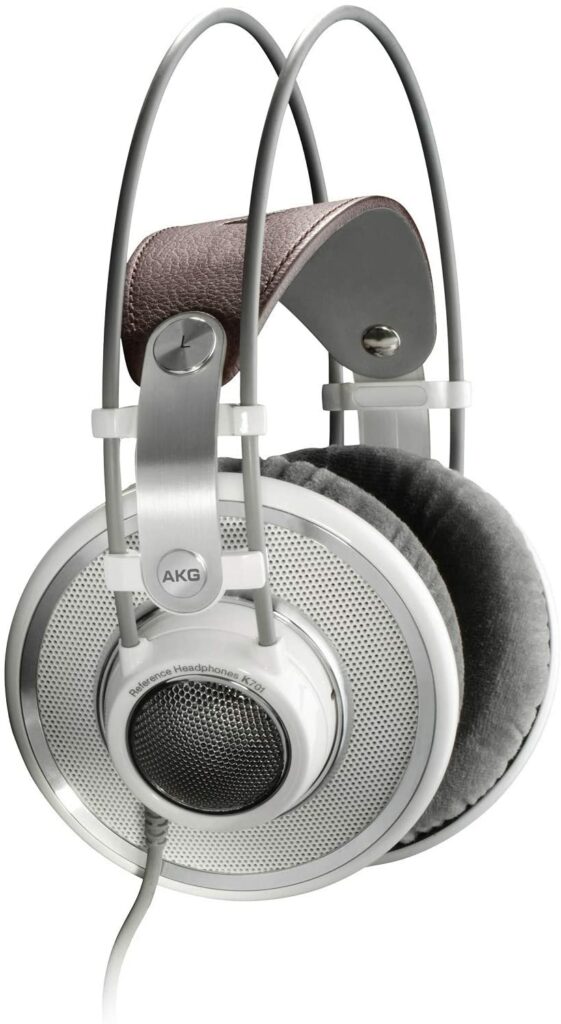
AKG K701
AKG are known for being on the slightly more affordable end of things, but that doesn’t mean their headphones aren’t worth considering – even in this tier.
They have great sound quality, although perhaps not as bass-y as some of the other open back options.
In comparison to the K240’s, they have a slightly flatter top end, making them ideal for studio use.
One major positive of these headphones is the loose design, which makes them ideal for those who don’t like tight headphones.
Also, if you prefer straight cables to coiled ones – these are a solid option.
Notable features:
- Flat wire voice coil technology, ensuring quality audio and transient reproduction
- Specially-shaped ear pads for comfort
- 62ohms impedance
- 10-39800Hz frequency response
Sennheiser HD 650
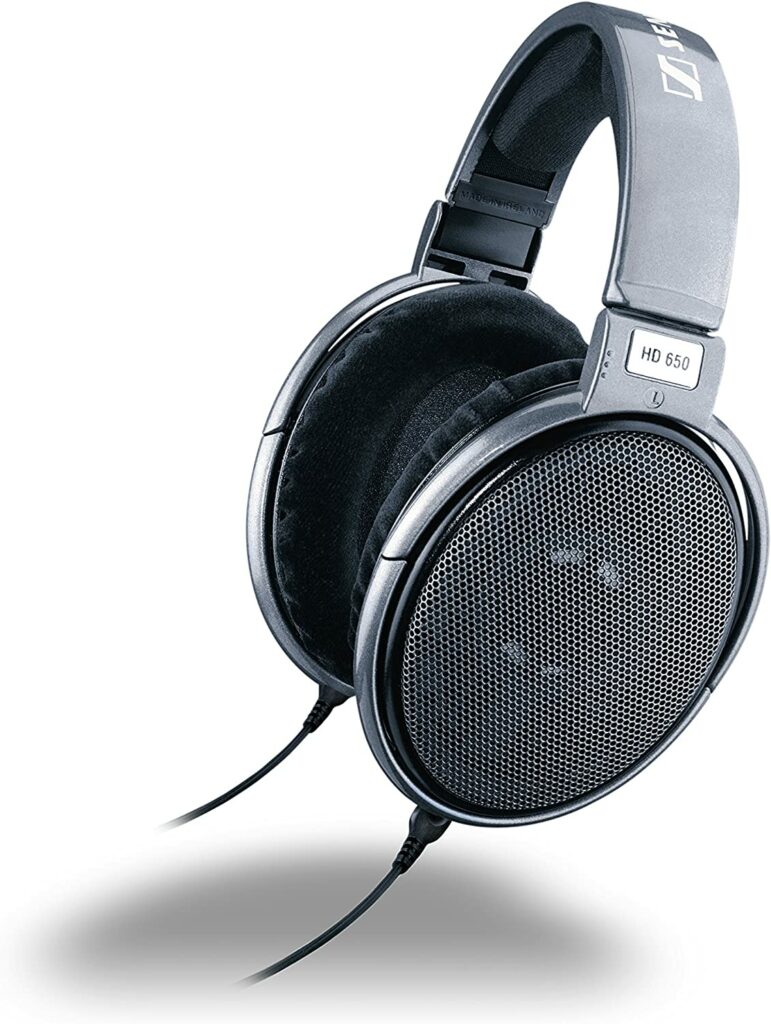
These studio headphones are extremely well-regarded in pro audio circles, and they are also great for electronic music production.
Sennheiser has a name for being extremely good audio quality with not much fuss. You get solid, flat headphones, especially at this tier.
The only department it lacks in is probably the lowest notes in the sub-bass frequency range.
To get the most out of these headphones, you will likely need a headphone amp, which is normally supplemented with an audio interface of some sort. In this case, you might need something dedicated.
Notable features:
- Optimised magnet systems to reduce harmonic distortion
- Special dampening materials to reduce resonances across the diaphragm surface
- 10-41000 Hz frequency response
- 300ohms impedance
V-Moda Crossfade M-100
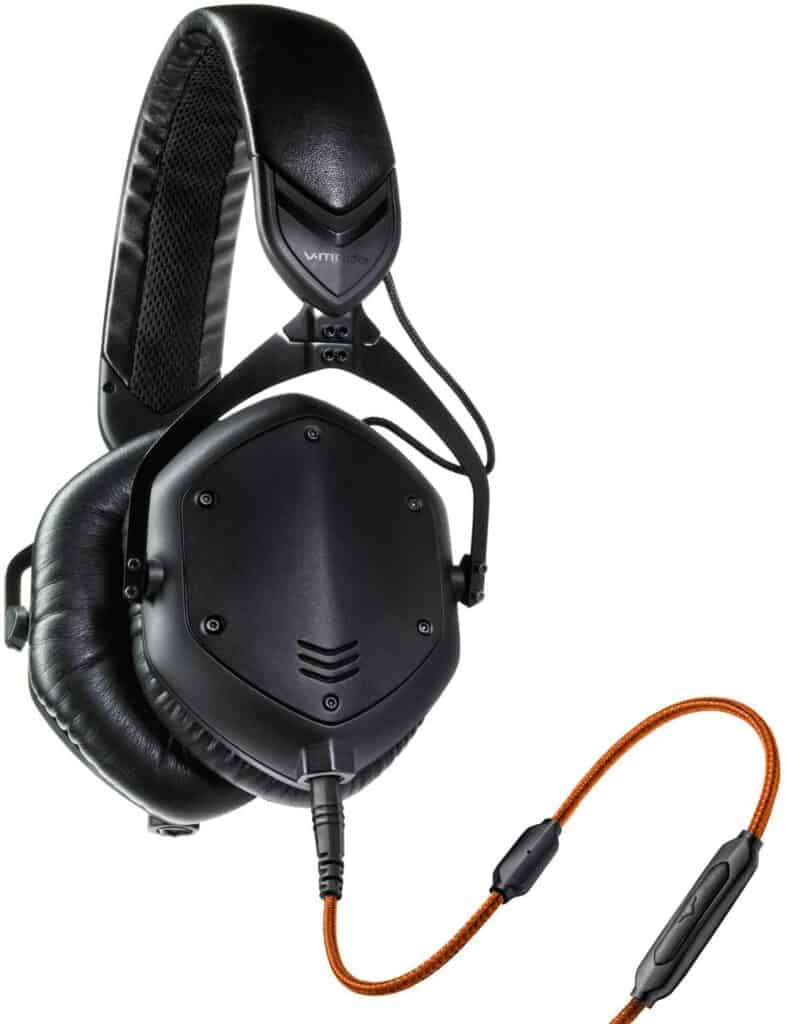
Ok, these are technically DJ headphones rather than studio headphones, but doesn’t mean they’re not suited for studio use.
Personally, these are my headphones of choice because they’re a great all-rounder, especially if you’re also a DJ like me.
For studio use, they have incredibly good sound quality and have amazing yet not overhyped bass response.
They’re also super durable – I’ve had my pair for over 6 years and have only replaced the earpads once very recently.
Notable features:
- Over-ear circumaural ear cups
- 5-30,000 Hz frequency response
- 32ohms impedance
- Immortal Life Replacement Program – discount on future headphones
Beyerdynamic DT 1990 Pro
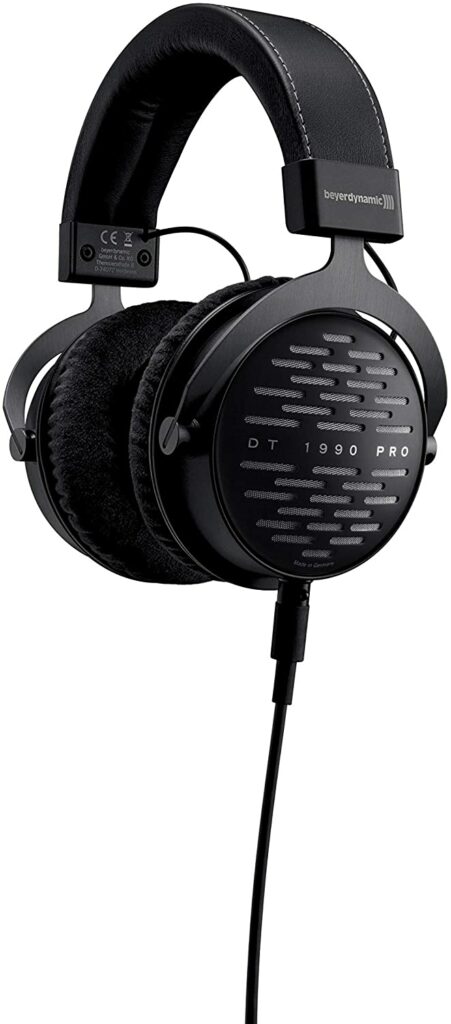
This is one of the top-of-the-line pairs from Beyerdynamic, and it doesn’t disappoint.
Not only are they open-back, but you get a much deeper bass response and fuller sound compared to the 990 Pro’s.
However, like all Beyerdynamic models, you’ll definitely be needing an amp to get the most out of these headphones.
The main benefit with these ones as well is the detachable cable and extra pair of ear pads, which as you may know, definitely wear out over time on any pair of headphones.
Lastly, this comes with a robust hard case for travel, unlike the soft options that come with a lot of other studio headphones.
Notable features:
- 45-mm dynamic Tesla neodymium driver
- 250ohms impedance
- Comfortable ear pads and headband for long studio use
- 5-40000Hz frequency response
Top-Of-The-Range Studio Headphones
The headphones below are world-class, and you probably won’t find anything like them anywhere else.
This list is for serious producers who want to hear every detail in their mix and in fact, these headphones rival or even beat some of the best studio monitors out there.
Audeze LCD-X
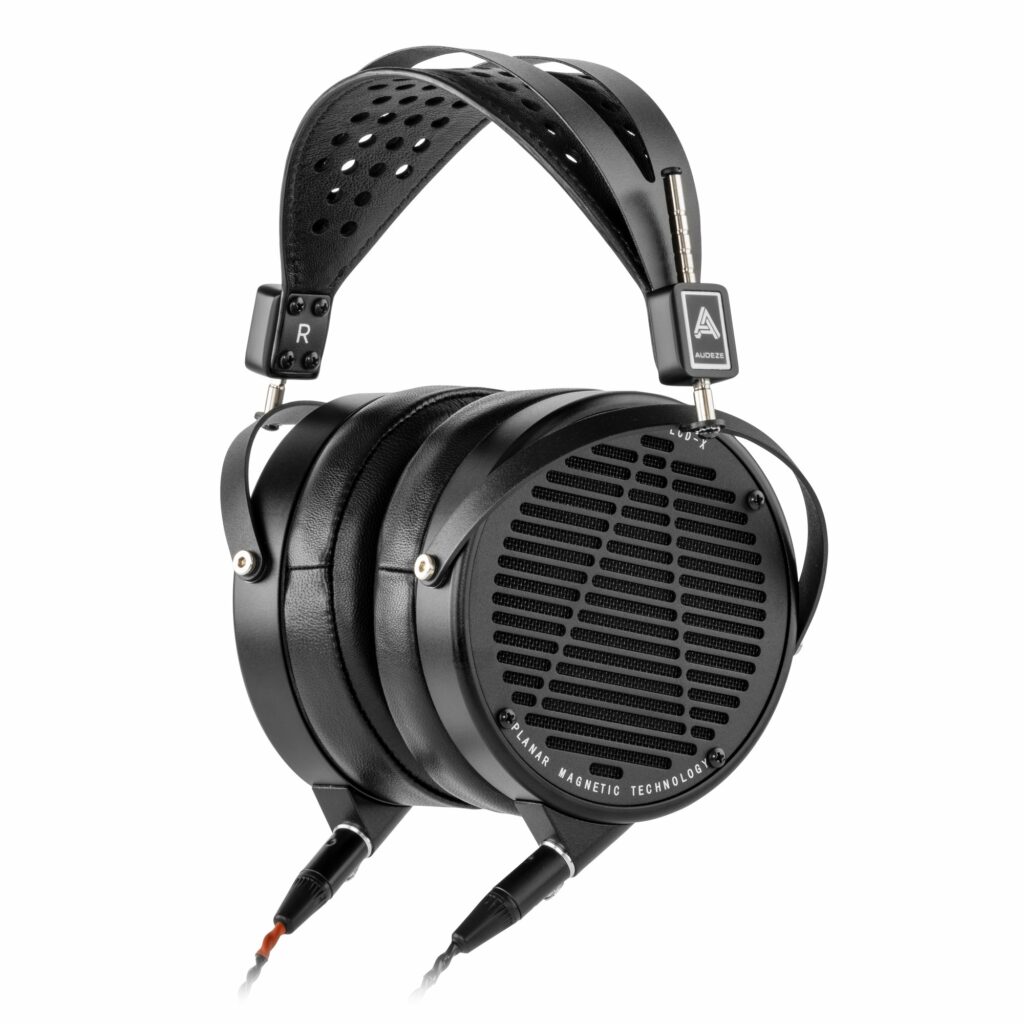
Audeze makes the most insanely detailed, full, and immersive studio-ready headphones.
Not only is the design a dead giveaway to the engineering prowess, but the sound from the planar magnetic drivers is actually better than most studio monitor setups (according to the opinions of many pro music producers).
Of course, they are designed to be the flattest and most accurate for music production (particularly mixing and mastering), and they have a great transient response.
This means that you’ll be forking out for these, but if you’re serious, then these are some of the best studio headphones money can buy. There’s a reason they’re recommended by producers like Noisia.
Notable features:
- Over-ear, open back ear cup design
- 20ohms impedance
- 10Hz – 50kHz frequency response
- 106mm planar magnetic transducer/driver
Audeze LCD-MX4
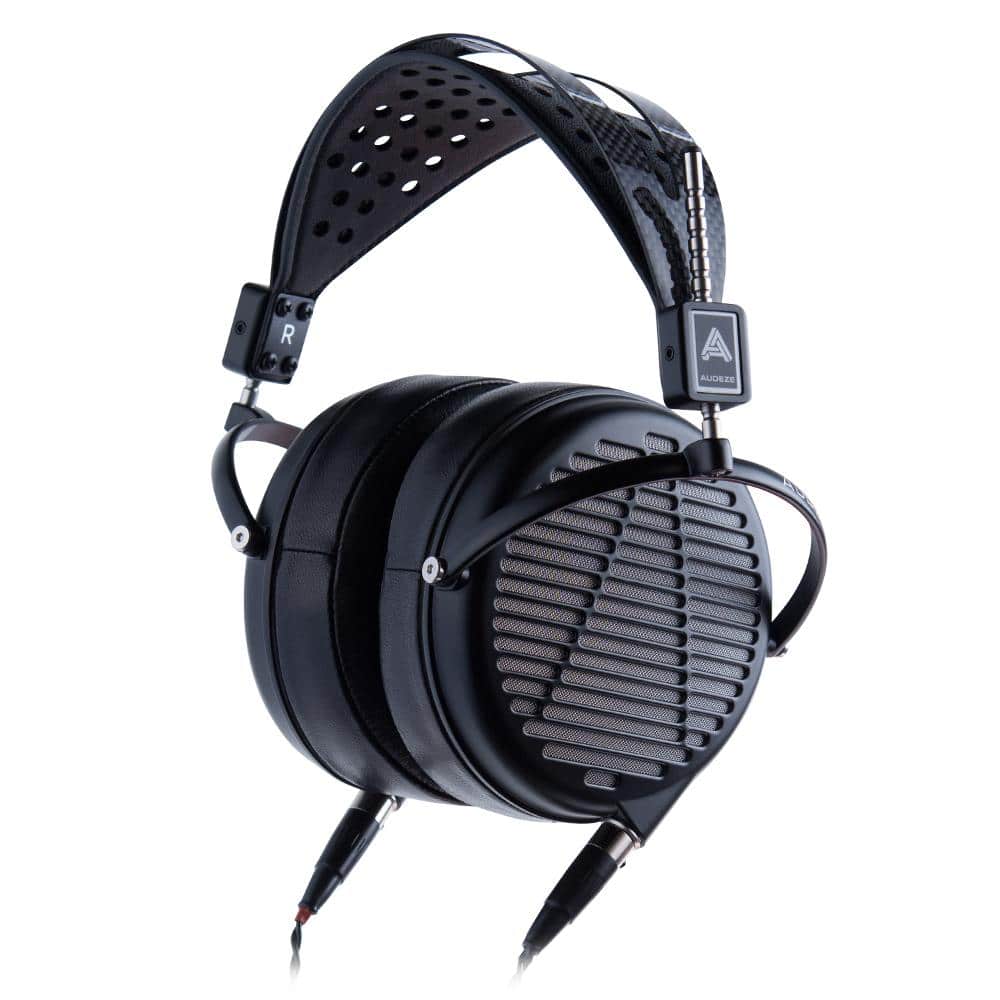
Just imagine the LCD-X’s but even more pristine and balanced. The result? Probably the best headphones that currently exist on Earth.
On this pair, you will hear everything, from every little detail to the big picture.
Besides the improvement in sound quality, a lot of the other features remain the same: build, connectivity, comfort and style.
I’d highly recommend testing these side-by-side with the LCD-X’s to see which pair better suits you, especially once you’re ready to spend over $1000 on headphones.
Notable features:
- Over-ear, open-back ear cup design
- 20ohms impedance
- 10Hz – 50kHz frequency response
- 106mm planar magnetic transducer/driver
Wrapping Up
Hopefully buy now you have a few options for studio headphones that you can check out.
And remember – make sure to try them out before buying if possible!
Before you go, if you’re a new producer who’s struggling to figure all this stuff out, make sure to sign up for our free video training.
This training will equip you with the mindset and tools needed to get started in electronic music production and fast-track your progress.
Click the link below to watch it now:
Did I miss any crucial pairs of studio headphones in this article? Email me at [email protected].

